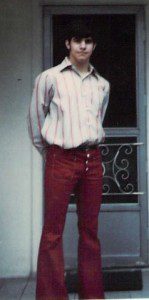I decided to enter a writing competition. All I needed to do was send my first fifty pages along with a “highly polished” one-page synopsis.
I thought: No problem. I just need to spiff up my first fifty pages and dash off a quick one-page summary. I can do that over this coming weekend.
After I told everyone I knew about entering the contest, reality set in. How is it possible to condense an entire novel down to one-page? Answer: Google is your friend.
My search results included:
- The Dreaded Synopsis by Jessica A. Briones
- Writing the Dreaded Synopsis by Carolyn Jewel
- That Dreaded Synopsis by Anne Gracie
- Mastering the Dreaded Synopsis Kaitlyn Johnson
Suddenly, filled with dread, I thought maybe I had been too optimistic (again).
I decided to get down to business. I researched online until I had a solid grasp of what I was trying to do. The biggest help: a compilation of successful synopses from Charlotte Dillon. (Some of the samples exceed one page, but were helpful. )
Once I got educated, I stopped procrastinating and started working. Here are the steps I took.
- Decided I needed help and hired Novel Publicity to assist.
- Summarized each chapter into a one or two sentences. Result: eight pages.
- Sent eight-page summary to my editor as background material to understand big picture.
- Identified important events. Removed references to unimportant events.
- Identified major characters. Removed references to any other characters.
- Rewrote synopsis, seeking to condense remaining sentences into coherent sequence of events.
- After a couple of passes, result was three-page synopsis. Saved for later use.
- Realized shrinking to one page would need different approach.
- Stepped back and asked myself, “What’s the story really about?” Remembered the Kurt Vonnegut diagrams. Decided to apply this approach.
- Starting with blank slate, wrote one-line summary.
- Expanded one-line summary to one paragraph.
- Wrote first draft of one-page synopsis using one-paragraph summary and three-page synopsis as aids.
- Celebrated!
- Sent first draft to my editor.
- Editor didn’t do line edit, instead pointed out major
problemsopportunities for improvement. Basically, he asked about major characters and plot elements that were missing. - Cursed and swore it was impossible to add these and still keep size to one-page. Then figured out how to do it.
- Sent revision one to editor.
- Received praise from editor followed by line edit version that flowed red ink all over my screen when I opened it.
- Repeated step 16.
- Sent revision two to editor.
- Received kind words from editor and a few final recommendations.
- Completed by adding the final polishing touches.
Yes, I had been overly optimistic. What I originally thought I could do in spare time over a weekend took much longer. But I’m really pleased with the result.
At some point, every author needs to write synopses. I’m sure there are many roads to success. Drop a comments below and tell us what worked for you.
One last thought: I want to express my deep appreciation to my personal editor, Novel Publicity‘s VP Rob Hart.
Comments
Related Posts

Scene Planning: Visualize Scenes Like a Master
I realized if I truly desired to master the arts of writing and storytelling, I needed to invest more time and energy planning before writing. These are the eight steps I now take before writing to visualize scenes.

Pantser to Plotter
My brother wrote, “I’m a pantser. My guess is that you’re a plotter.” He was only partly right. Things aren’t always black or white.

Creative Ways To Capture Research Notes
When my research for my novel-in-progress required hiking in freezing weather, taking notes the traditional way didn’t work well. Here’s a couple of ideas of how to use technology for even better results.

Beta Reader Instructions
After you type those magic words (THE END) into your manuscript, you will want to have a few beta readers review it. Here are the instructions I give my beta readers.


